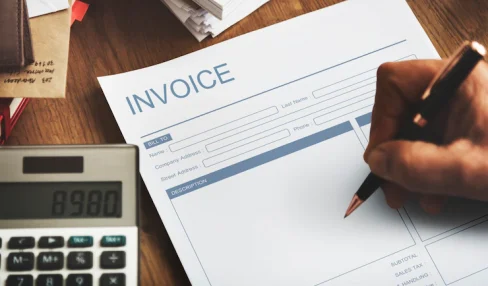Understanding Financial Safety Nets: Adapting to Life’s Unexpected Costs
23 January 2025
5 Mins Read

toc impalement
Let’s be honest: life doesn’t care about your budget. One day, you’re sipping coffee and planning your grocery list. Subsequently, the next, your car’s transmission gives out, your kid chips a tooth at soccer practice, or your basement floods after a heavy rain.
These aren’t just “bad days”—they’re financial earthquakes that can shatter the foundations of even the most carefully managed budget.
The Federal Reserve reports that nearly 37% of Americans can’t cover a $400 emergency without borrowing or selling something. As a result, that statistic isn’t just a number—it’s a reality for millions of people who are one broken furnace or medical bill away from financial chaos.
But here’s the good news: Therefore, you don’t need a six-figure salary or a trust fund to build a safety net. Moreover, with the right strategies (and a few modern tools), you can navigate emergencies without falling into predatory debt traps.
Let’s dive in.
What Is a Financial Safety Net?

A financial safety net refers to funds or resources to manage sudden and urgent expenses. It acts as an economic buffer during emergencies, such as:
- Car repairs: Essential for commuting to work or fulfilling family obligations.
- Medical expenses: Covering unplanned procedures or treatments.
- Home repairs: Fixing plumbing, heating, or other critical systems.
- Utility bills: Ensuring essential services like electricity or water are uninterrupted.
This financial buffer offers peace of mind and minimizes the impact of unexpected costs. Therefore, having financial buffers can actually help you to stay afloat.
Why Do You Need a Financial Safety Net?
Emergencies can happen at any time. You may rely on high-interest loans or credit cards without a financial safety net. This can lead to a never-ending cycle of debt, making it next to impossible to recover.
Benefits of a Safety Net:
- Reduced Stress: Knowing you’re prepared for emergencies provides mental clarity.
- Flexibility: A safety net allows you to address issues promptly without financial strain.
- Avoiding Debt: Prevents reliance on costly borrowing solutions.
Building Your Financial Safety Net
Creating a financial safety net takes time but is worth the effort. However, creating a financial safety net is one of the most critical aspects of business. Therefore, keep an open mind and follow these steps to get started.
1. Assess Your Current Financial Health
- Review your income, expenses, and savings
- Identify unnecessary spending that can be redirected to savings
2. Set Realistic Savings Goals
- Start small by saving $10–$20 weekly (or more if your budget allows)
- Aim to save enough to cover three to six months of living expenses
3. Automate Your Savings
- Use automatic transfers to a dedicated savings account.
- Treat your savings as a non-negotiable expense.
4. Explore Alternative Financing Options
When savings aren’t enough, having access to quick, reliable funds is crucial. Services like CreditNinja offer installment loans designed for emergencies. Moreover, these loans provide flexible repayment terms and are a better alternative to payday loans.
5. Create a Crisis Budget
- Prioritize essential expenses such as housing, utilities, and groceries.
- Eliminate discretionary spending during emergencies to stretch your resources.
How to Handle Unexpected Expenses
Life’s emergencies don’t arrive with any prior warning. Whether it’s a medical crisis or a broken appliance, having a plan ensures you can act swiftly and continue life as usual.
Emergency Scenarios and Solutions:
It is imperative to have solutions for emergencies. This plan can help businesses to understand and effectively implement measures in case something unforeseen happens. Therefore, here are some plans to help you deal with emergency scenarios and solutions.
- Car Repairs: If your car breaks down and your savings fall short, an installment loan can provide quick access to funds.
- Home Repairs: Addressing issues like leaking pipes or a damaged HVAC system requires immediate attention. Use your safety net or a trusted financial service.
- Medical Bills: Always negotiate payment plans with healthcare providers and consider alternative financing options for more significant expenses.
By planning, you can avoid unnecessary stress and financial disruption.
Tips for Responsible Borrowing
When borrowing becomes necessary, it’s crucial to proceed responsibly. Here are some tips:
- Understand Loan Terms: Always read the fine print. Be aware of interest rates, fees, and repayment schedules.
- Borrow Only What You Need: Avoid overborrowing to minimize future repayment burdens.
- Repay On Time: Consistent repayment helps maintain good credit and reduces long-term costs.
How to Handle an Emergency Without Panicking (A Step-by-Step Guide)
Having an emergency plan is like a safety net. It can help you implement measures that can help you to stop your business from cascading.
However, it only works if you do not panic. Here is a step-by-step approach that you need to understand and not panic while handling an emergency.
Step 1: Pause, Breathe, and Assess
When disaster strikes, your first move isn’t financial—it’s emotional. Panic leads to bad decisions. Take 10 minutes to:
- Write down the problem (e.g., “Car won’t start—need $1,200 for repairs”).
- Rank its urgency: Is this a “today,” “this week,” or “next month” problem?
- Call a trusted friend or family member to brainstorm ideas.
Step 2: Explore Every Option Before Borrowing
- Ask for a payment plan: Many mechanics, doctors, and contractors offer interest-free installment plans.
- Check local resources: Organizations like Modest Needs or 211.org provide grants for working families in crisis.
- Use community networks: Post in a neighborhood Facebook group: “Need a plumber who accepts payment plans.” You’ll be surprised how many people want to help.
Step 3: If You Must Borrow, Do It Strategically
Borrowing isn’t ideal—but sometimes, it’s the only way. Here’s how to minimize the damage:
- Avoid payday loans at all costs. Their fees are designed to keep you in debt.
- Compare lenders: Find clear terms, no hidden fees, and flexible repayment. Many offer fixed-rate loans for emergencies like car repairs, so you know what you’ll owe monthly.
- Plan your repayment before signing: Use a free tool like Undebt. to map out how the loan fits into your budget.
The Role of Financial Tools
Services from lenders typically provide a lifeline during emergencies. Hence, offering installment loans with clear terms empowers individuals to handle urgent expenses responsibly. However, unlike payday loans, these loans are designed to support long-term financial stability.
Maintaining Your Financial Safety Net
Once you’ve built your safety net, the next challenge is maintaining it. Follow these tips:
- Regularly Reassess Your Budget: Adjust your savings goals as your financial situation changes.
- Avoid Dipping Into Savings: Treat your safety net as a last resort, not an alternative for routine expenses.
- Replenish After Use: If you deplete your safety net, prioritize rebuilding it immediately.
A Financial Safety Net is Non-Negotiable
A financial safety net is your shield against life’s unpredictable moments. By saving diligently, exploring responsible financing options, and managing your resources wisely. You can face emergencies with confidence. Start building your safety net today and secure your financial future.
Read Also:


















Comments Are Closed For This Article